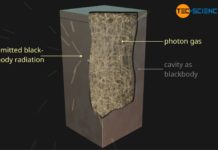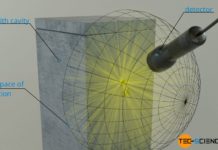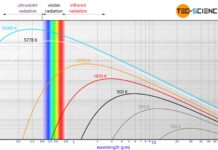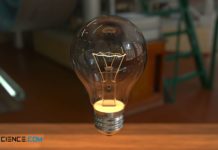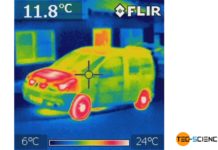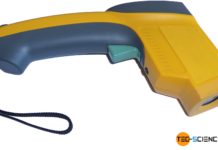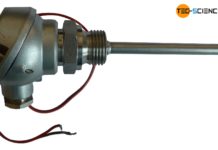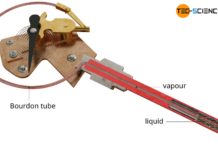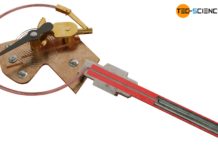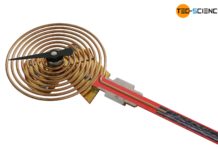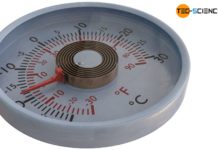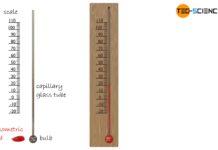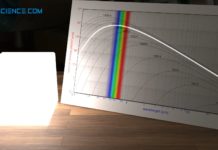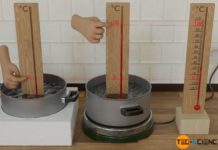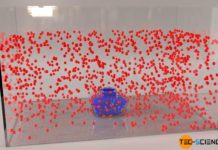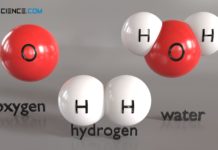Thermodynamic derivation of the Stefan-Boltzmann Law
In this article the Stefan-Boltzmann-Law is to be derived using the laws of thermodynamics.
Introduction
In this article, the Stefan-Boltzmann Law is to be derived with the laws of thermodynamics. In order to...
Different forms of Planck’s law
Planck's law of radiation can be expressed in different forms. The most important ones are discussed in this article.
Introduction
Planck's law of radiation describes the radiation emitted by black bodies. However, there...
Planck’s law and Wien’s displacement law
Planck's law describes the radiation emitted by black bodies and Wien's displacement law the maximum of the spectral intensity of this radiation.
Blackbody radiation
The emitted wavelength spectrum of a blackbody as shown...
Stefan-Boltzmann law & Kirchhoff’s law of thermal radiation
The Stefan-Boltzmann law states that the radiant power of an object in thermal equilibrium is proportional to the fourth power of temperature and directly proportional to its surface!
Introduction
In the article Blackbody...
How does a thermal imaging camera work?
Thermal imaging cameras are based on the same principle as the pyrometer. These cameras capture the radiation spectrum of an object, which then allows conclusions to be drawn about the temperature...
How does a infrared thermometer (pyrometer) work?
Pyrometers (infrared thermometers) use the heat radiation of objects invisible to the human eye to determine the temperature!
The thermometers presented in the previous articles must directly touch the object from which...
How does a thermocouple work?
In this article we will deal with the design and operation of a thermocouple which is used to measure temperatures.
Seebeck effect
A thermocouple uses the phenomenon that a voltage is caused by...
How does a resistance temperature detector (resistance thermometer) work?
In resistance thermometers the dependence of the electrical resistance on the temperature is used to determine the temperature!
Operating principle
A further measuring principle for determining the temperature is the change in the...
How does a vapor pressure thermometer (vapor-in-metal) work?
Vapor pressure thermometers use the temperature-dependent vapor pressure of a liquid as the measuring principle.
The less popular vapour pressure thermometers work according to the same principle as liquid-in-metal thermometers or gas-in-metal...
How does a gas filled thermometer (gas-in-metal) work?
In gas thermometers, the pressure rise connected with a temperature increase is used for measuring the temperature!
In gas filled temperature gauges (also called gas thermometers or gas-in-metal thermometers), a gas is...
How does a liquid filled thermometer (liquid-in-metal) work?
Liquid-in-metal thermometers use the pressure rise of a liquid that comes along with an increase in temperature, if the volume is kept constant!
In liquid-in-metal thermometers (also referred to as liquid filled...
How does a bimetallic strip thermometer work?
In bimetallic strip thermometers the different rates of expansion of metals when heated is used to measure the temperature!
Operating principle
Temperatures can be meassured based on the principle of different thermal expansion...
How does a liquid-in-glass thermometer work?
In liquid-in-glass thermometers, the thermal expansion of liquids is used for measuring the temperature!
Operating principle
Liquid-in-glass thermometers are based on the principle of thermal expansion of substances. A liquid in a glass...
Blackbody radiation
Blackbody radiation (cavity radiation) is the thermal radiation of a blackbody, i.e. a body that absorbs all incident radiation.
Blackbody
When white light hits an opaque object, a certain part of that light...
Density anomaly of water (negative thermal expansion)
Density anomaly refers to the paradoxical behavior of a substance to expand suddenly when cooling down instead of contracting further (anomalous decrease in density).
Negative thermal expansion (density anomaly)
Due to its special...
Temperature scales
Learn more about the origin of the Celsius, Fahrenheit, and Kelvin temperature scales in this article.
Introduction
In everyday life, temperature is often understood as a quantity that expresses the property of a...
Temperature and particle motion
The higher the temperature of a substance, the greater the kinetic energy of the particles!
Temperature
If matter is heated and thus its temperature rises more and more, it can be seen that...
Particle model of matter
The particle model imagines matter made up of individual particles (atoms, molecules)!
https://www.youtube.com/watch?v=KBmhSd7wb5Y
The particle model of matter
The central model for the description of thermodynamic processes is the particle model, which will be...

